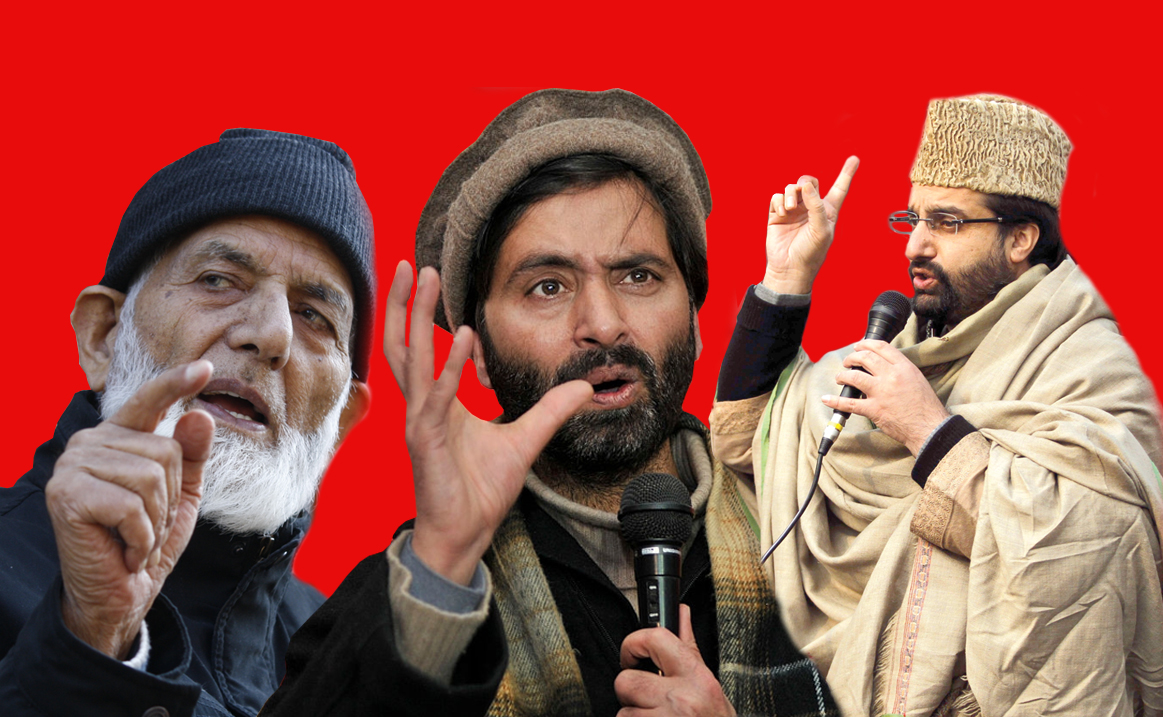A.G. Noorani
COULD the directors-general of military operations of India and Pakistan have agreed “to fully implement the ceasefire understanding of 2003” in Kashmir in a short phone conversation on May 29, unless it had already been agreed at the highest political level?
Chief Minister Mehbooba Mufti has been urging a reluctant centre to order a ceasefire in Kashmir, at least during the holy month of Ramazan, after the “suspension of operations” against the insurgents in the Valley.
On May 9, an all-party meeting in Srinagar urged the centre to consider a ceasefire during Ramazan and the Amarnath Yatra. This means extending the ceasefire beyond Eidul Fitr in mid-June till the yatra concludes in late August.
Prime Minister Narendra Modi saw no harm in acceding to her wishes. He values the BJP’s coalition with Mufti’s PDP in Kashmir. For the first time since Maharaja Hari Singh got the order of the boot from Jawaharlal Nehru and Sheikh Muhammad Abdullah, the Dogras — the BJP’s backbone in Kashmir — acquired a political presence in the Valley; something for which its people are unlikely to forgive the PDP. It is little noticed that after India’s much-touted ‘surgical strike’ across the Line of Control in Kashmir, the ceasefire all but ended.
Modi faced a total boycott when he went to Srinagar on May 19; as had all his predecessors since the outbreak of insurgency in 1989. Next year, the insurgency will be 30 years old.
But Minister of Home Affairs Rajnath Singh and Minister of External Affairs Sushma Swaraj have both made clear that political dialogue must remain a distant dream. On May 26, a mere two days before the ceasefire, Singh spelt out terms for a dialogue that he knew full well would not be acceptable to Pakistan or to the leaders of the Joint Resistance Leadership (JRL), Syed Ali Shah Geelani, Mirwaiz Umar Farooq and Yasin Malik. He said, “If Hurriyat is ready to talk, we have no problem, we are ready to talk to anyone. Even if Pakistan comes for a dialogue, we are ready for it,” but adding, that militancy, which he claimed Pakistan was promoting, had to end first.
Thus both his interlocutors have first to ‘beg’ for talks. What has he to offer to them? On May 28, Swaraj said, “Why does Pakistan want to talk to India? Pakistan has been isolated in the international community…. This is a success of Indian foreign policy. … We are ready for talks but there is a caveat. … Terror and talks cannot go together.”
Dialogue was separate from the other mechanisms of dialogue between the two sides at the levels of coast guards, the DGMOs and border police heads. These channels would keep working.
“With much thinking, we separated the NSA-level talks from the comprehensive bilateral dialogue, [launched in December 2015] as talks on terror should be held,” she said, suggesting that these dialogue formats help when formal talks break down.
It is not as simple as that, for Pakistan matters to Kashmiris, as does Azad Kashmir. On May 25, Mirwaiz said, “It is long overdue that India and Pakistan allow the leadership of the two divided parts of Kashmir … to meet with each other and decide on their future course of action regarding their destiny. … [The] Hurriyat leadership will extend its full support to every serious effort aimed at resolving [the] Kashmir [issue] so that peace prevails and bloodshed stops.”
The JRL made a significant statement on May 29: “Let [the Indian government] give clarity on what it wants to talk about and speaks in one language. We are ready to join the process.” This goes to the heart of the matter. What has India to offer to the Kashmir? In July 2000, the Vajpayee government brusquely rejected Kashmir’s autonomy report sponsored by Farooq Abdullah’s government and endorsed by the assembly in Srinagar. And what has it to offer to Pakistan even if it entered the dialogue process?
India has always drawn a distinction between talks and negotiations. On Aug 14, 1962, Nehru told the Lok Sabha, “There is a world of a difference between negotiations and talks.” He was ready to talk; most reluctant to negotiate.
There is another problem. If the Kashmir dispute cannot be settled between India and Pakistan over the heads of Kashmiris, still less can it be settled between Kashmir and India by bypassing Pakistan, which is not only a party to the Kashmir dispute but a party within Kashmir. It resides in the hearts and minds of most Kashmiris. They view Pakistan differently from India. For example, both the unionists and the separatists saw Pervez Musharraf as one who could clinch a settlement on Kashmir. On Nov 30, 2007, then chief minister Ghulam Nabi Azad praised him to the skies as a unique conciliator. Days earlier, Mehbooba Mufti said on a local TV channel, “Naturally we are concerned. We have a sentimental and geographical affinity with Pakistan.”
Courtesy Dawn




